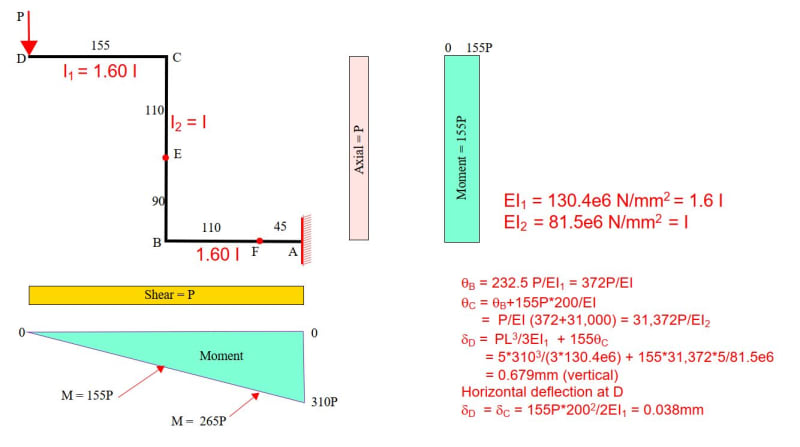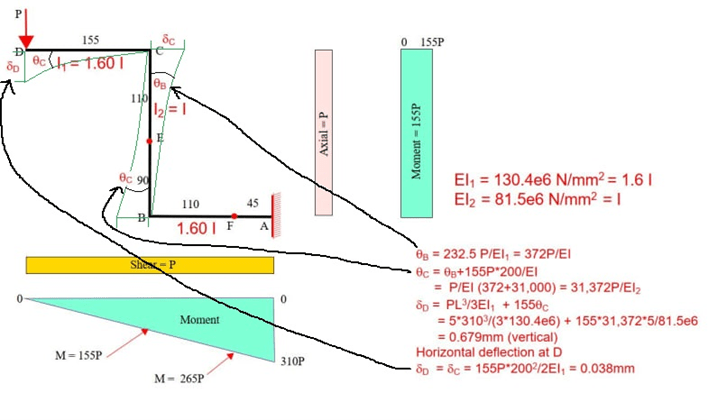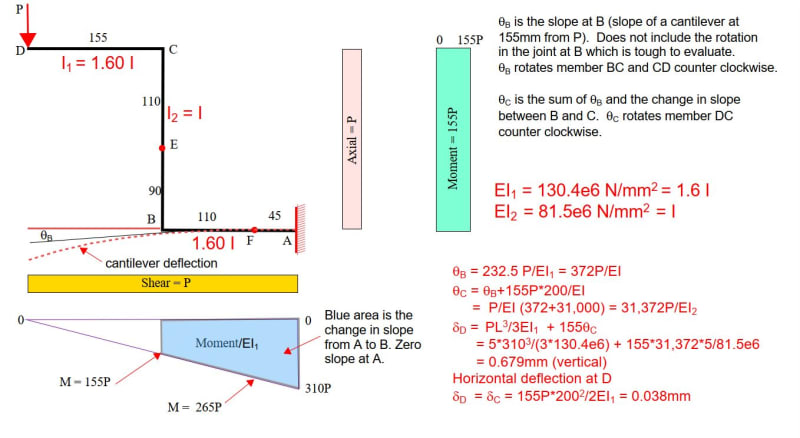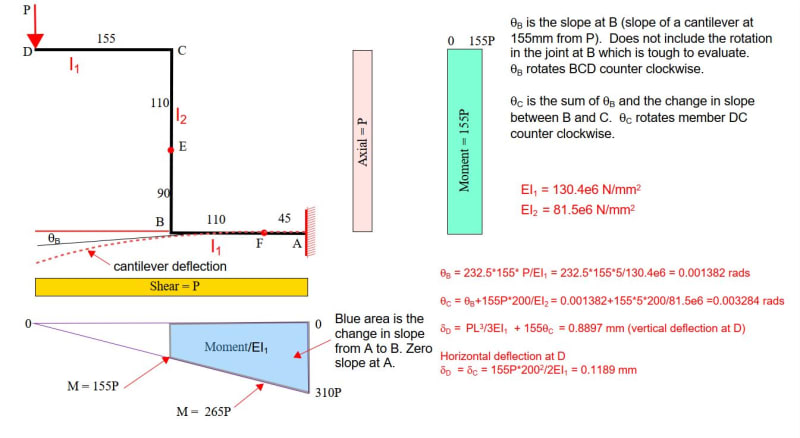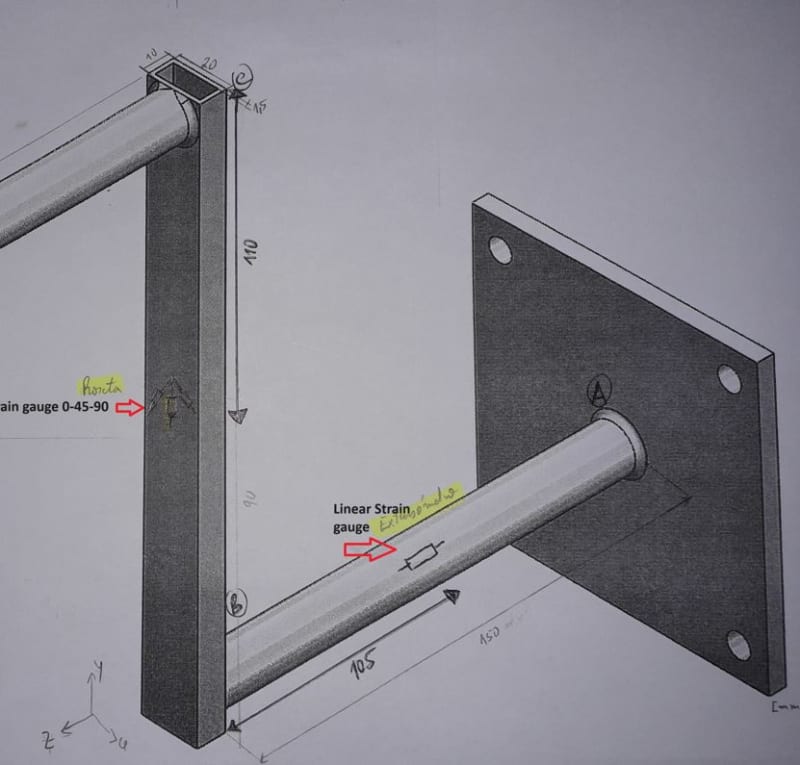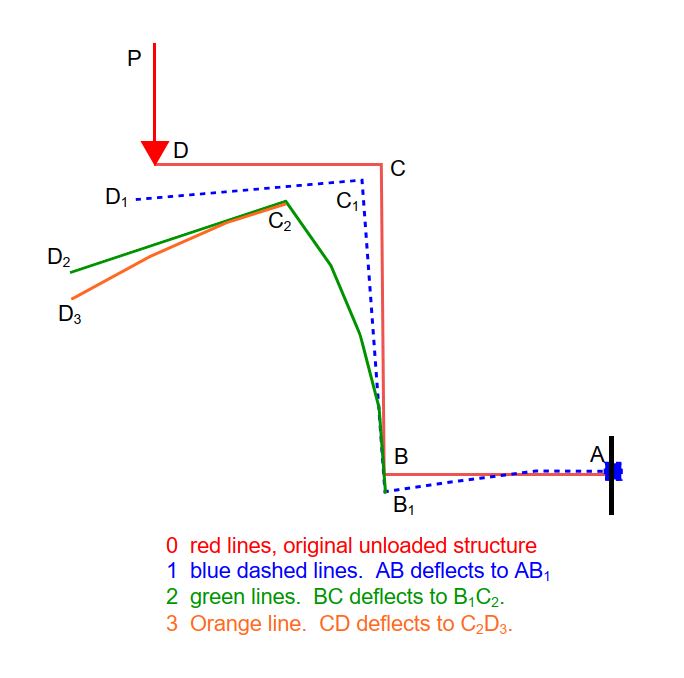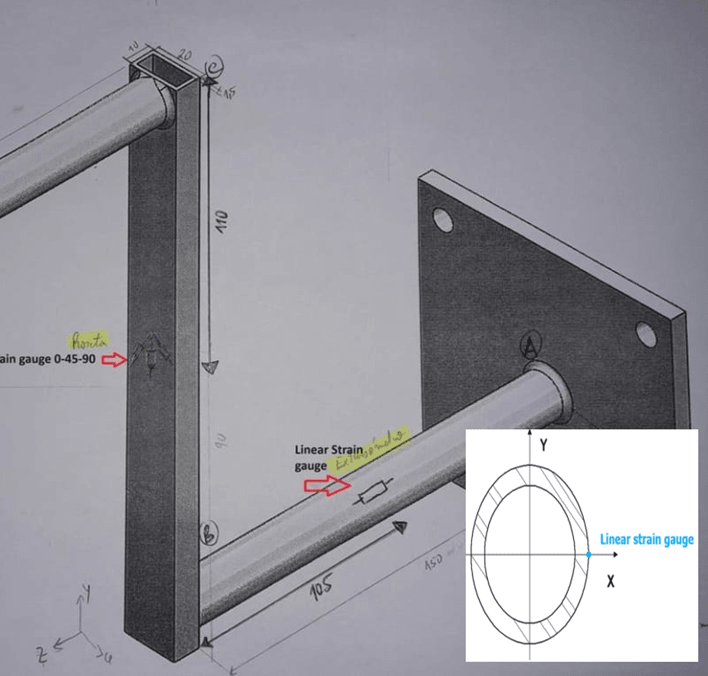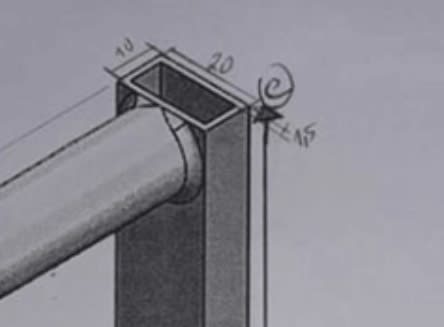& BA[/color]]BA I was checking your calculations, however I still have some doubts about how you arrived at some equations. Can you check if the sketch I made corresponds to the displacements and slopes? It's too washed out to get a good read, but thetaC is totally wrong.
Why thetaC is the sum of thetaB and the change of slope between BC? Shouldn't be only the change of slope between BC? Why would you say that? For that to be true, member AB could not have deflected at all. When AB deflects, B goes to B1 and C moves to C1. Then when BC deflects, C1 goes to C2 (the green line in my diagram.
In the second page i make how to get to equations of thetaB and and thetaC, could you check if looks correct? Our value for thetaB agrees. I can't read your comments about thetaC. If you want me to check any more of your stuff, type it out. I'm 90 years old and my eyes cannot take the strain of reading such terrible handwriting. It is not only bad, it is washed out...too faint to read.
Experimentaly i obtained for 5;7;9 [N] 1.491; 1.931 and 2.762 mm of displacement. Okay, I knew about the first two, but not the last result. It seems to be in fair agreement with the 5N test.
Now for 5 [N] a total displacement of (1.00868-1.491)/1.491 is has an error from 32.3% which is bigger than 20%. That is not surprising, as you are ignoring the joint rotations at B and C, and possibly A.
On solidworks i am obtaining a displacement on D of 0.9319 mm for 5 [N]. Doesn't tell me much, as I don't know what the basis was for that number.

